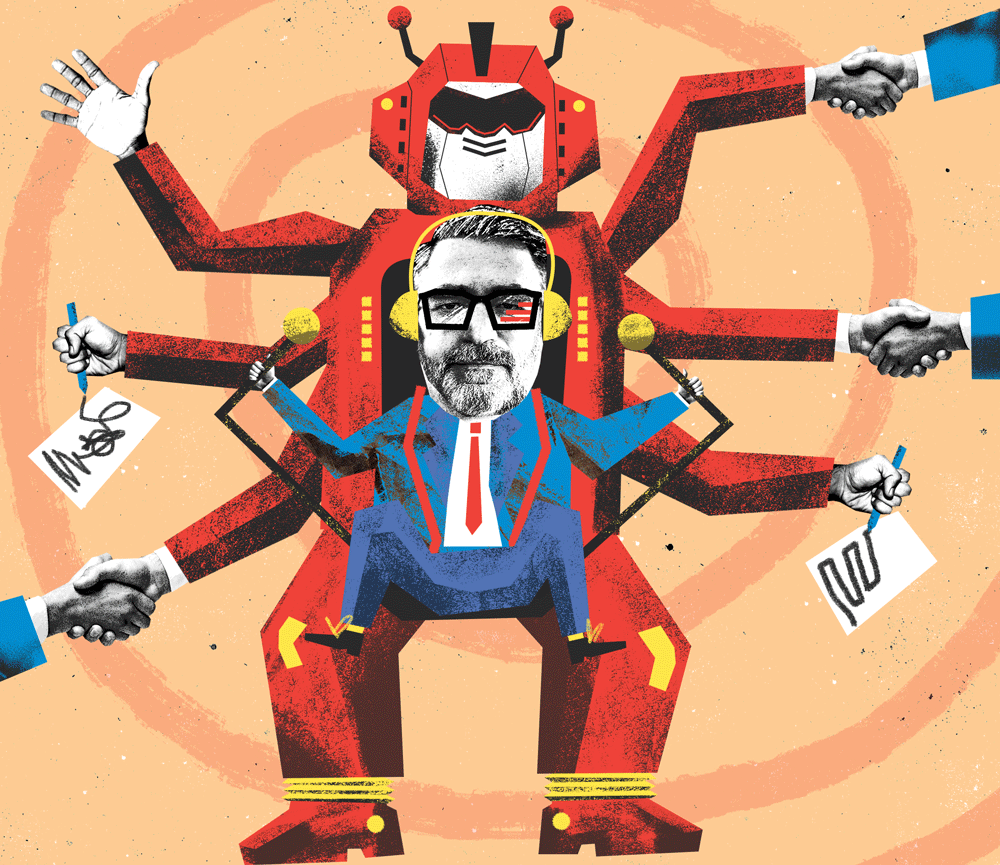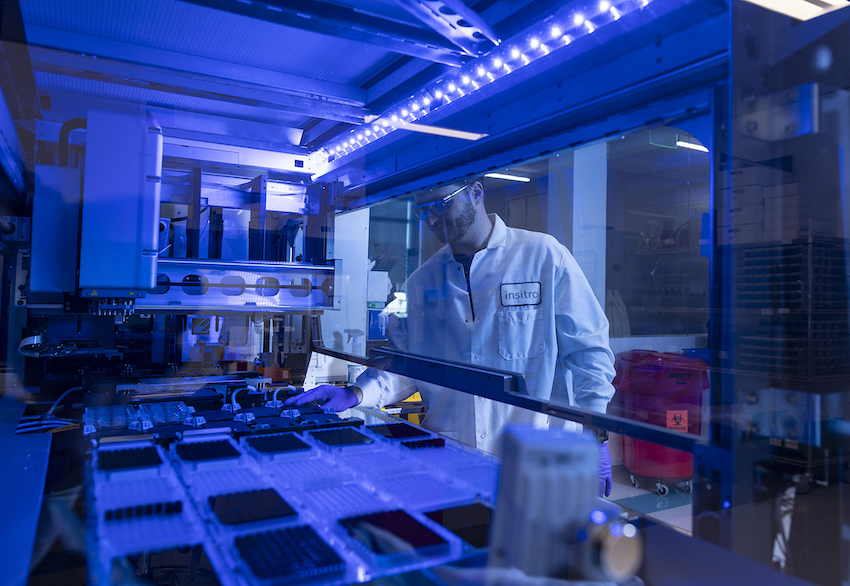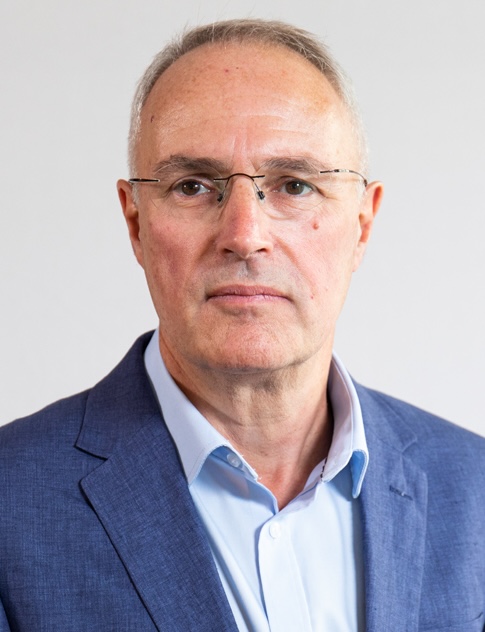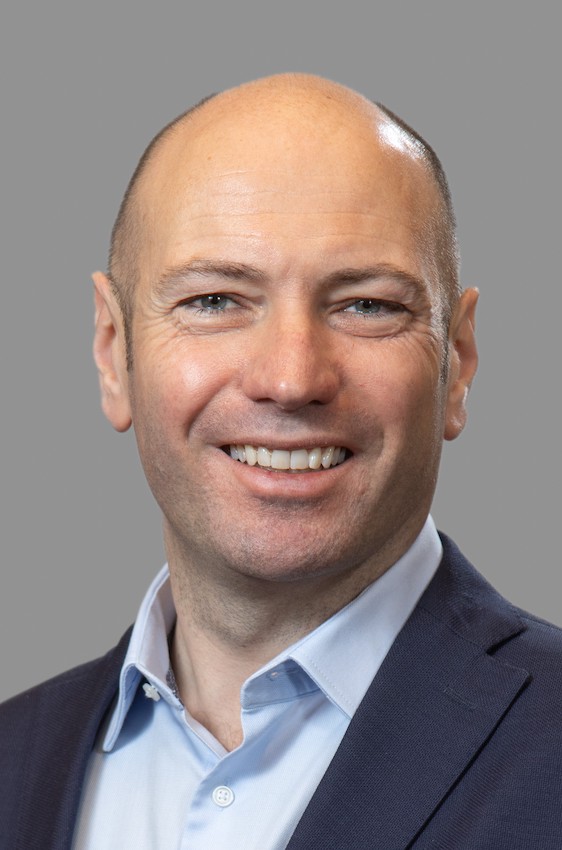Will AI drive a revolution in drug discovery? Ben Hirschler examines how it is being used to sift through a mountain of health-related data—including his own biomedical records.
In a nondescript building 40 miles west of London,half a dozen gray-haired folk are sitting around in scrubs waiting for their MRI scans. But this is not a hospital. Instead, we are all here to donate our data—specifically, detailed scans of our brains, hearts, abdomens and bones that will add to gigabytes of information already collected about our bodies over the past two decades.
It is all stored away by UK Biobank, which is funded by the Wellcome Trust and Medical Research Council, among others. It is held in de-identified files, alongside frozen blood samples and genome sequences, for interrogation by scientists and—increasingly—analysis by artificial intelligence.
By mapping all these data signals against our health records, researchers using the resource are gaining new insights into diseases from Parkinson’s and Alzheimer’s to cancer, diabetes and
eye disorders.
And this is just the start. The data gathered by UK Biobank—which recruited 500,000 middle-aged Britons back in 2006 to 2010 and has been tracking their health ever since—is only a small part of the mountain of biomedical information generated every day around the world by healthcare systems, academic teams and pharmaceutical companies.
Combining AI and machine learning with these rich troves of biological and health data could herald a new era of medical discoveries, treatments and potential cures for intractable diseases. It could also transform prospects for the pharmaceutical industry by accelerating drug development and increasing R&D efficiency.
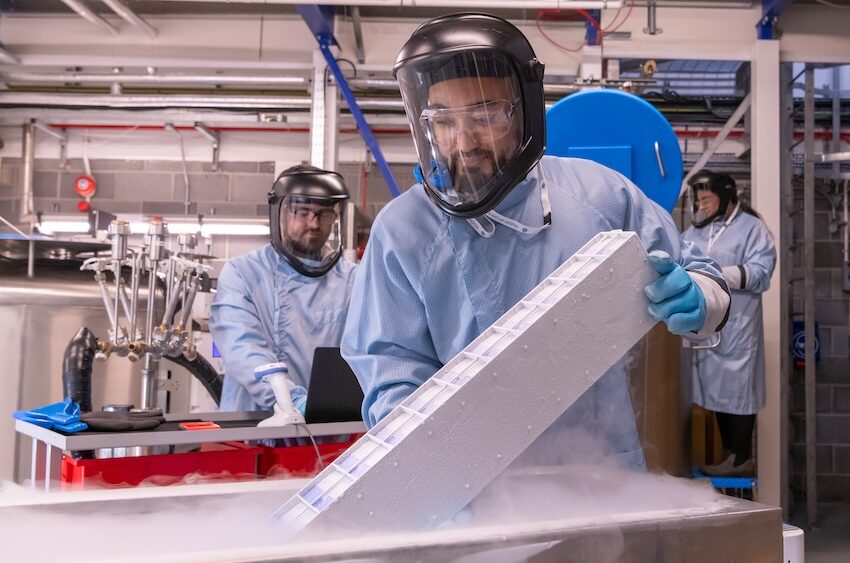
At UK Biobank, samples from 500,000 people are a rich resource for computer-driven biomedical research.
Professor Naomi Allen, Chief Scientist at UK Biobank, says researchers now have the data and computing power to unravel why some people develop diseases that don’t affect others, providing an opportunity to develop new therapies and catch diseases much earlier.
“AI plays an increasingly crucial role in modern drug discovery because it gives researchers an opportunity to accelerate the identification of new insights that wouldn’t be easily discovered through more traditional methods. So, for example, AI models can be used to predict which proteins, genes or molecular pathways are involved in disease processes, and then that will help researchers prioritize promising drug targets,” she explains.
“This type of modeling can really have traction when you’re trying to predict which drugs are more likely to work and also how to repurpose existing drugs for other conditions. And I think it will drive the whole idea of precision medicine by allowing us to work out who is likely to respond to a certain drug based on their genetic makeup.”
However, it won’t be plain sailing. Medicine development is inherently difficult, and AI will never do away with the need for time-consuming and expensive clinical trials. Running those trials, including the ones that fail, accounts for most of the approximately $2.5 billion cost of bringing a new medicine to market.
So, what exactly are the opportunities and challenges ahead?
Experts believe it is best to think of AI as a new tool in the hunt for medicines, rather than a panacea. Applying it at scale will be complicated and sometimes frustrating. While many pharmaceutical companies have made significant investments in AI in recent years, those efforts have yet to produce a noticeable improvement in productivity. There has also been a sharp rise in the number of AI-focused biotech companies, some of which have had distinctly bumpy rides after failing to deliver hoped-for early wins.


But while AI may not turn around industry prospects overnight, its medium-term impact could still be very significant. Morgan Stanley calculates that even modest improvements in early-stage drug development success rates driven by AI could lead to an additional 50 novel therapies over a 10-year period, translating to a more than $50 billion opportunity.
In an era of geopolitical rivalry, in which both AI and biotechnology are viewed as strategically important sectors by governments around the world, policymakers are paying close attention. Expectations have been fueled by high-profile successes such as the Nobel Prize-winning development of an AI model that can predict the way in which proteins fold—the key factor in determining how they function.
A number of obstacles remain to optimizing AI use. A lack of high-quality datasets is one bottleneck holding things back, since insights generated by AI are only as good as the data used to train the machine learning models. The availability of good data also varies widely between therapeutic areas and population groups, which may mean people with conditions in less commercially attractive fields, such as infectious diseases in low-income countries, are less likely to benefit.
Ensuring equitable benefits from AI will require datasets that are both reliable and broadly representative. That is one reason why the All of Us research program in the US, which aims to collect genetic and health data from 1 million volunteers, is deliberately targeting communities that have been historically underrepresented in past biomedical research.
Another key element in building authoritative datasets is trust. Worries about cybersecurity and privacy have made trust more of a challenge in recent years, which Allen believes highlights the case for showing the benefits of pooled information. “Data saves lives. If we can harness it, with the appropriate safeguards in place, then scientific discoveries will just accelerate for the good of everyone.”

Within the organizations now pioneering AI drug development, there are other hurdles—not least the cultural one of getting biologists and computational scientists to work seamlessly together.
California-based biotech insitro—its name is a combination of in silico and in vitro—is tackling this challenge head-on by fostering a “bilingual” culture, where scientists and technologists learn the language of each other’s expertise.
“What we really need if AI is going to help us build better medicines is the right data in the hands of the right people who can build the right machine learning models,” says Mary Rozenman, the company’s CFO/CBO. “That is why once a year we have a week where we bring everybody in the company together and we focus on building community. So, we do hackathons for our biology team and lab experimentation for our computational team. We really try and enable that cross-pollination that helps them work better together.”
The company is training its machine learning models on cellular data from its own laboratories and human cohort data from large third-party data providers, including UK Biobank.
“By relying on multimodal data at scale from humans and cellular systems we can uncover novel genetic intervention points in disease. We can then develop therapeutics against them, rapidly move them into the clinic, and hopefully they will be safe and effective for patients,” says Rozenman.
At the moment, most experimental medicines fail in the clinic—the most expensive part of the drug development process—because they hit the wrong biological targets in the wrong patients. In the future, Rozenman thinks the insitro team will be able to increase the probability of success at least threefold by using AI to better understand the complexities of specific diseases.
But she cautions it won’t happen overnight. “There has to be a commitment to pull through. It takes a long time to do this well, and significant capital. It’s not for the faint-hearted, and we are fortunate to have investors who have the vision and the stamina to make the most of this opportunity.”
The coming years will show whether AI can improve productivity in a pharmaceutical industry where developing new products is notoriously difficult and risky—but UK Biobank’s Allen is optimistic. “We are only just getting started. I think it’s likely there will be breakthroughs in the next couple of years that will really be game changers.”
More from this issue
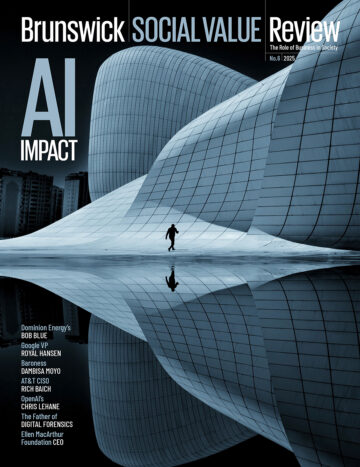
AI Impact
Most read from this issue

A Race for the World
